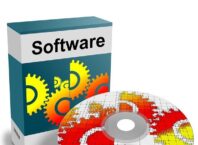Supply chain management software is a vital tool for businesses that streamline their operations and improve efficiency. The right software solutions by teams like ComActivity can help you manage your inventory, track orders, and optimise your distribution network.
This blog post will learn about the key features of good supply chain management software.
Contents
Inventory Management
The first key feature of good supply chain management software is its ability to manage inventory. This includes tracking inventory levels, reordering products, and managing stock. It helps a business keep track of its inventory levels and always have the products they need on hand.
Real-Time Information
Good supply chain management software will provide you with real-time information. This means that you can track your inventory levels, production progress, and shipping status at any given moment. Real-time information can help you make quick decisions and keep your operation running smoothly.
Flexible Reporting
Another essential feature in supply chain management software is flexible reporting. You should be able to generate reports on demand and customise them to your specific needs. This way, you can get the information you need to make informed decisions about your supply chain.
Efficient Order Management
An efficient order management system is another must-have for good supply chain management software. This system should be able to keep track of customer orders from the moment they are placed until they are delivered. Order management should also be able to generate reports that show the status of each order.
Complete Integration
Supply chain management software should offer full integration to be effective. This means that the system should be able to integrate with other software systems and databases. The system should also be able to connect to external data sources for a more efficient and accurate flow of information.
Data Visualisation
One key feature of good supply chain management software is data visualisation. This feature allows you to see all aspects of your supply chain, including suppliers, manufacturers, distributors, and customers. Data visualisation can help you identify bottlenecks and problem areas in your supply chain to make changes to improve efficiency.
Scalability
As businesses grow, they will need software to accommodate increased volume and complexity. Scalable software will be able to handle more SKUs, more locations, and more data.
Process Optimisation
Supply chain management software should help you optimise your processes and make your operation more efficient. It should have features that allow you to streamline your workflow and eliminate bottlenecks. Furthermore, the software should be able to help you plan and forecast your production needs so that you can avoid stock-outs and overproduction.
Customisation
Most supply chain management software on the market today is highly customisable. You can tailor the software to fit the specific needs of your business. Add or remove features, change the way data is displayed, etc. It allows you to get the most out of the software and ensures that it meets your specific needs.
Cloud-Based Access
One of the key attributes of supply chain management software is cloud-based access. It allows users to connect to the software from anywhere in the world, at any time. Additionally, cloud-based access allows for real-time collaboration between users and the ability to track changes and progress over time.
Security
The system should have security features that protect your data from unauthorised access. This will help in the event of a data breach. Furthermore, the solution should have the ability to encrypt data at rest and in transit.
Forecasting and Analytics
The system should have forecasting capabilities that allow you to predict demand and make informed decisions about inventory levels. In addition, the software should have analytics tools that help you understand your data and make better decisions about your supply chain.
So, these are some key features you should look for in supply chain management software. Do your research and choose a system that meets your specific needs.












